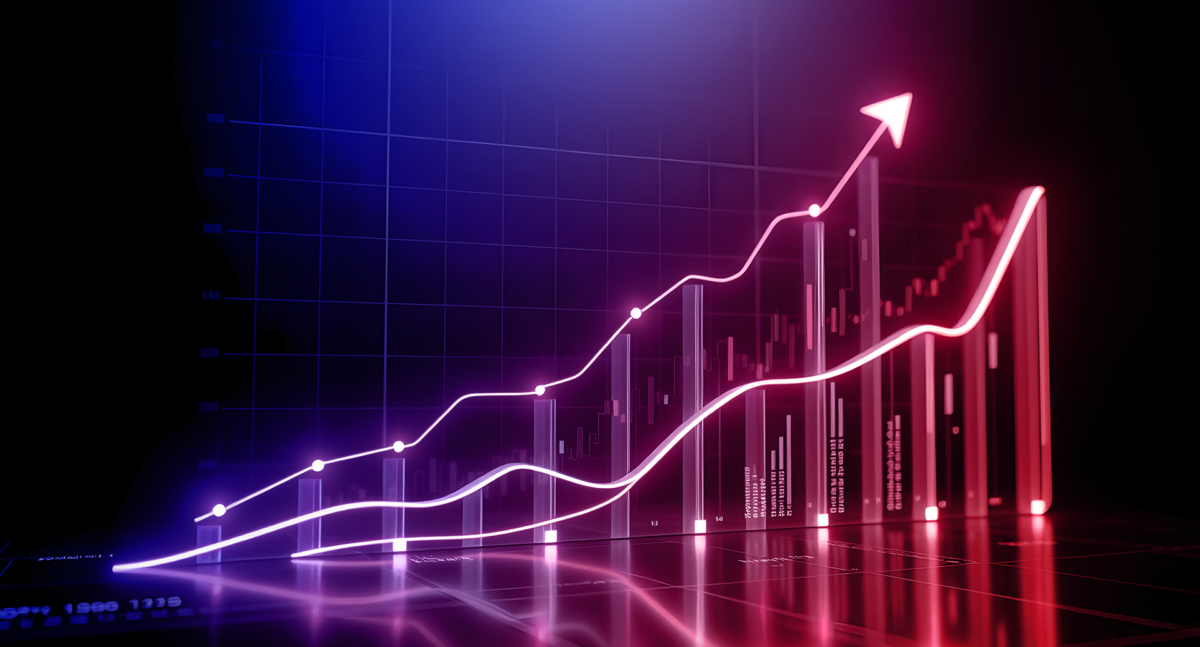Performance branding – the recipe for success in 2025
One question has dominated marketing debates in recent years: performance or branding? Successful marketers today are now combining both. They know that short-term sales gains can be sustained only with effective brand building.

Why performance marketing doesn’t work without branding
One thing is clear: Without a sound brand strategy, performance marketing quickly becomes inefficient and expensive. Focusing exclusively on optimizing conversions may produce short-term gains, but if the brand loses its appeal, the effects can’t be sustained. Successful companies therefore aim to balance data-driven performance optimization and long-term brand marketing.
adidas and Nike are insightful examples. Both brands invested heavily in digital performance strategies in recent years to achieve short-term increases in sales. But this approach eroded their brand value – and as a result, even when they increased their advertising budgets, they could not achieve the same effects. Too much dependence on performance marketing also meant their brand identity was no longer strong enough to differentiate them. While their competitors continued to invest heavily in branding, the emotional appeal of adidas and Nike weakened, and customer loyalty decreased. This example clearly shows that performance marketing alone is not enough to build a sustainably successful brand – without long-term brand management, performance marketing merely becomes a cost factor.
Brand vs. performance marketing: The figures speak for themselves
A recent DMEXCO survey of CMOs’ agendas for 2025 shows that the paradigm shift has already taken place in the C-suite:
27 percent of CMOs are planning to continue investing in performance marketing.
31 percent have recognized that they focused too much on performance in the past and neglected brand building.
32 percent are therefore planning targeted increased investment in branding.
Another key trend emerges from the survey: the growing importance of social media as a channel for both performance marketing and branding: 95 percent of companies are already actively using social media platforms, and 74 percent want to continue expanding their investment in this area. What’s more, use of artificial intelligence is rapidly gaining traction in marketing: 60 percent of CMOs see it as a creative enabler, and 54 percent aim to use AI-based automation to achieve cost savings.
These figures paint a clear picture: The future belongs to companies that focus on both sides of the equation with brand performance marketing and combine it with innovative technologies. A smart strategy can help secure competitive advantages and create a sustainably successful brand.
How to achieve the perfect blend of performance and brand marketing
The challenge lies in aligning performance marketing and branding so closely that short-term successes don’t come at the expense of long-term brand building. Companies need to recognize that effective synergies between the two do more than just increase efficiency – they also enable sustainable differentiation. It’s not just about budgets, but rather about coherent brand communication and the ability to combine emotional customer engagement with data-driven approaches. We’ve summed up the crucial factors below:
- Long-term brand building: Trust and recognition lay the foundation for a sustainable performance strategy.
- Data-driven brand management: Successful companies analyze the data to see which branding activities boost performance in the long term.
- Consistent communication: Maintaining a strong brand message at all times creates a clear brand positioning.
- Attention as a lever for success: Standing out in the digital jungle is the key to continued relevance – and that pays off in terms of both performance and brand strength.
- The customer experience as the connecting element: A seamless, positive user experience strengthens both brand loyalty and performance KPIs.
- Emotional storytelling: Creating emotional narratives builds deeper connections to customers and strengthens engagement rates in the long term.
Want to learn more about brand building and communication? CMOs Nadine Bartenschlager and Catherine Niebuhr join the DMEXCO podcast to discuss NIVEA’s successful balance of authentic marketing communication, tradition, and negotiating the brand’s digital transformation.
Performance branding: It’s a question of balance
It’s not a question of brand vs. performance marketing – the future belongs to both. Digital competition is more intense than ever before, and attention is the most valuable asset. Brands need to combine efficient performance with effective brand marketing for clear differentiation. A strong brand ensures clear recognition, sustained customer loyalty, and a long-term market presence. Pure performance marketing may generate short-term visibility, but without a solid brand strategy, the effects won’t last.
What’s more, companies that invest in their long-term brand building from an early stage will be more resistant to rising advertising costs and the constantly changing algorithms on the major platforms. A strong brand identity generates organic reach and reduces dependency on cost-intensive paid-media campaigns.
What other marketing trends are set to define the future? Verena Gründel, DMEXCO’s host, has put together a roundup of the 11 key marketing trends for 2025 for you.
Don’t miss any important news from the world of digital marketing, both nationally and internationally! Subscribe to the new DMEXCO newsletter “Digital Digest” and receive the latest information directly in your mailbox every Monday, Wednesday, and Friday.






